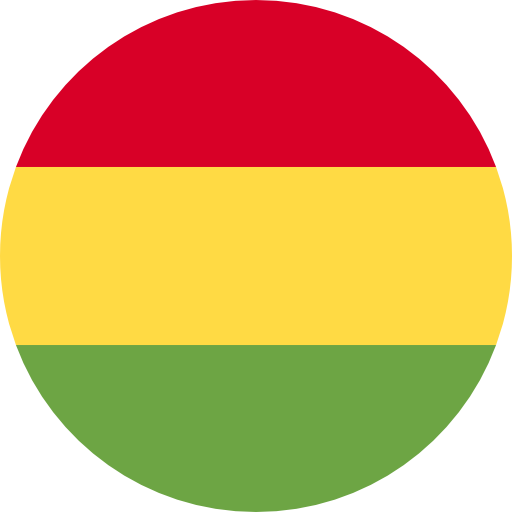
- Home
- Coin Values
- Regions
- Spot Silver Price: $36.93

Silver coins were in regular circulation in Bolivia. The values below represent the intrinsic value of silver coins from Bolivia.
Bolivia silver coins that are in uncirculated condition, or that may be rare and collectible may also have numismatic value. You can use this table as a guide when buying and selling circulated silver coins from Bolivia.
The melt values are calculated and displayed in USD based on the today's silver spot price of $36.93 per troy ounce.
| Denomination / Currency | Years Minted | Fineness | Gross Weight (g) | ASW (g) | ASW (oz t) | Melt Value |
|---|---|---|---|---|---|---|
| 10 Centavos | 1872- 1900 | .900 | 2.3 | 2.07 | .0666 | $2.46 |
| 20 Centavos | 1872- 1907 | .900 | 4.6 | 4.14 | .1331 | $4.92 |
| 20 Centavos | 1909 | .833 | 4 | 3.33 | .1071 | $3.96 |
| 50 Centavos | 1873- 1900 | .900 | 12.5 | 11.25 | .3617 | $13.36 |
| 50 Centavos | 1900- 1908 | .900 | 11.5 | 10.35 | .3328 | $12.29 |
| 50 Centavos | 1909 | .833 | 10 | 8.33 | .2678 | $9.89 |
| 100 Pesos 25nos | 1975 | .933 | 10 | 9.33 | .3 | $11.08 |
| 250 Pesos 25nos | 1975 | .933 | 15 | 14.00 | .4499 | $16.61 |
Bolivia has a rich history of minting silver coins, especially during the 19th and 20th centuries, when silver was a primary metal for coinage in South America. Below is a list of notable silver coins minted during this period, their denominations, silver purity, and other key characteristics.
This large coin typically featured the Bolivian coat of arms on the reverse, with a depiction of the sun or liberty on the obverse. The 8 Soles was the standard silver coin in Bolivia and was widely used in trade.
Key Dates: 1830, 1837, and 1852 are key dates for collectors due to their rarity.
The 4 Soles coin was also used extensively in Bolivia, featuring similar designs as the 8 Soles but smaller in size. These coins are relatively rarer and have significant numismatic value.
This smaller denomination was also an important part of Bolivia's silver coinage system. These coins featured the same designs as larger Soles coins, making them a vital part of everyday transactions.
1 Sol (1827-1859)
One of the smallest silver denominations, the 1 Sol coin is often collected for its historic value. Like other coins of the time, it bore the Bolivian national symbols and motifs celebrating liberty.
Similar to other denominations but produced in smaller quantities, this coin is especially sought after by collectors due to its lower mintage numbers.
This coin replaced the Sol series and became the main silver currency of Bolivia in the 20th century. The design featured the Bolivian coat of arms and a liberty theme. The coin's size and silver content made it a valuable piece for both collectors and investors.
Half of a Boliviano, this coin was widely circulated for smaller transactions. It features the same design elements as the 1 Boliviano coin but in a smaller format.
This was a fractional coin used for everyday transactions. It is relatively common compared to other denominations but still holds value for its historical significance.
A large coin issued in 1951 to commemorate the Bolivian constitution, it features important historical symbols of Bolivia. It is highly prized by collectors for its size and limited mintage.
10 Bolivianos (1951)
This is one of the largest Bolivian silver coins minted during the 20th century. It commemorated key events in Bolivian history, including its independence. The coin is rare due to its limited mintage and high intrinsic value.
Like many other coins from this era, the value of Bolivian silver coins depends heavily on their condition. Coins in Good (G) or Fine (F) condition are worth significantly less than those in Very Fine (VF) or Extra Fine (XF) condition. Coins in Uncirculated (UNC) or Mint State (MS) condition can fetch premium prices.
Certain years and mint marks are more valuable than others. For example, 19th-century coins, especially those with low mintages or those in high-grade conditions, are particularly prized by collectors. Coins with errors or unique minting characteristics can also carry additional value.
Bolivia's rich history of silver coinage, spanning from the 19th century to the mid-20th century, reflects its role as a major producer of silver in South America.
These coins were vital to the country's economy and played an important role in trade and commerce. Today, they are valued not only for their silver content but also for their historical significance and rarity.
Collectors often seek out these coins for their beauty, historical importance, and the role they played in the development of South American economies during this time.